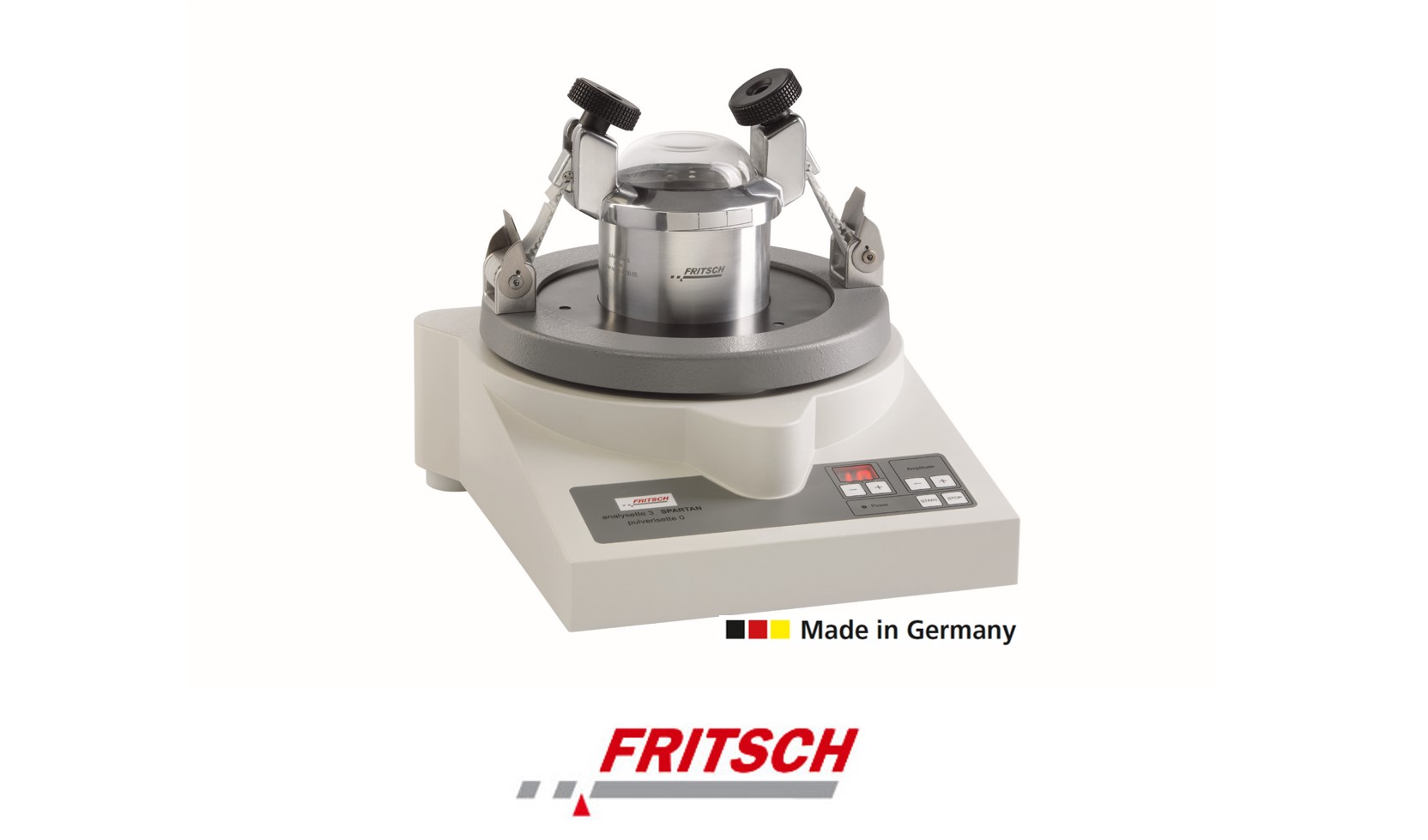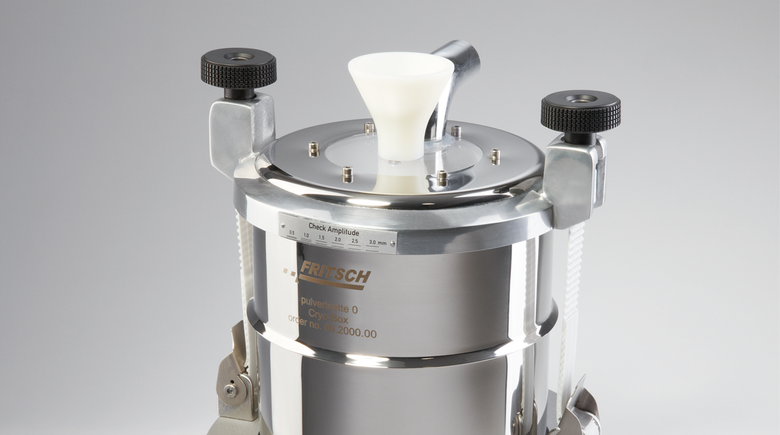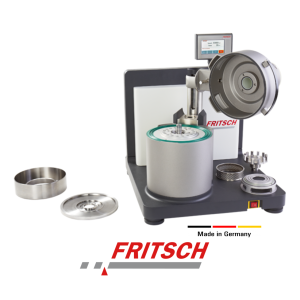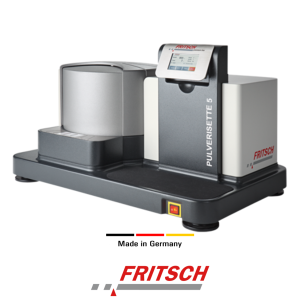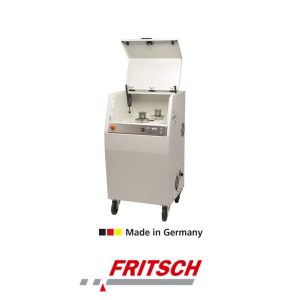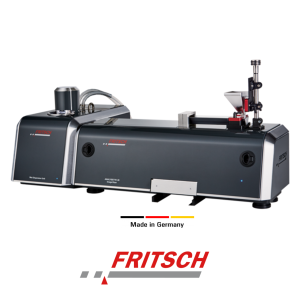תיאור
Impact and Friction
The FRITSCH Vibratory Micro Mill PULVERISETTE 0 grinds your sample through impact and friction by which the mortar vibrates electromagnetically and the grinding material transfers the vibrations to the grinding ball. At the beginning of the grinding, the comminution of the coarse particles is achieved by the impact effect of the grinding ball. Next, the fine particles are comminuted through friction by the tumbling motion of the grinding ball as the vibrations subside. The impact energy of the grinding ball is freely adjustable thus, allowing it to be precisely adapted to the sample being ground.
- Adjustable oscillation amplitude for easy adaption of the vibration energy to the grinding sample
- Grinding bowl oscillations 3,000 – 3,600 oscillations/min at 1 – 3 mm amplitude
- Agglomeration phenomena avoided
- Ergonomically positioned membrane keyboard IP65, splash-proofed
- Window for observing the grinding progress
- Digital Timer
- Extensive accessories for simplifying your daily work
FRITSCH cryo-box
For fast embrittlement of soft, slightly oily, fatty or moist materials, for cryogenic grinding, we offer the FRITSCH cryo-box: Simply insert the filled grinding set into the cryo-box and fill it with liquid nitrogen, with this method even extremely difficult-to-grind samples can be ground down to analysis fineness. And the thick insulation ensures a particularly efficient use of coolant.
Comminution and sieving in one unit
For dry and wet sieving, the FRITSCH PULVERISETTE 0 can be converted into to a Vibratory Sieve Shaker for quantitative particle size analysis of solids (measuring range 32 μm – 63 μm) and suspensions (measuring range 20 μm – 10 mm) by simply inserting corresponding sieves.
Mortar and grinding balls
The Vibratory Micro Mill PULVERISETTE 0 operates with a mortar, which is equipped with a grinding ball. All FRITSCH mortars are rimmed, regardless of the material, in a robust shell of shock-resistant aluminium, which protects the actual mortar. To optimally adapt the grinding to any sample type, you can choose between 6 different materials, whereby mortars and grinding balls of the same material are generally used. For cryogenic grinding, use mortars and grinding balls made of steel or tungsten carbide.
| Working principle | impact force |
| Optimal for material type | medium-hard, brittle, temperature-sensitive, moist |
| Grinding tools | mortar and grinding ball |
| Materials of the grinding tools | Agate, sintered corundum, zirconium oxide, stainless steel, hardened steel, hardmetal tungsten carbide |
| Grinding ball diameter | 50 – 70 mm |
| Max. feed size (depends on material) | 5 mm |
| Min. sample quantity | 1 ml |
| Max. sample quantity | 10 ml |
| Final fineness (depends on material) | 10 µm |
| Grinding time (depends on material) | 10 min |
| Grinding process | dry / wet |
| Cryogenic grinding | yes |
| Grinding bowl oscillations per minute | 3,000 – 3,600 at 1-3 mm amplitude |
| Electrical details | 100-240 V/1~, 50-60 Hz, 50 Watt |
| Emission sound pressure level at the workplace according to DIN EN ISO 3746 (depending on the material to be ground and mortar/grinding balls used) | approx. LpAd = 68 dB, with sound absorption hood approx.LpAd = 53 dB |
| Weight | 21 kg |
| Dimensions (W x D x H) | bench top instrument 37 x 40 x 20 cm |


